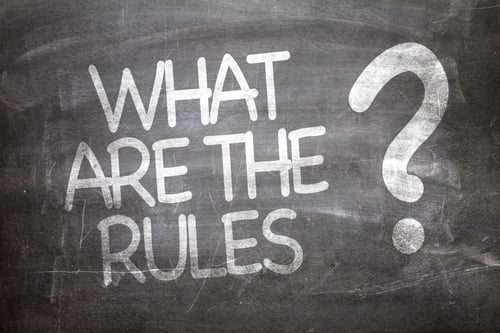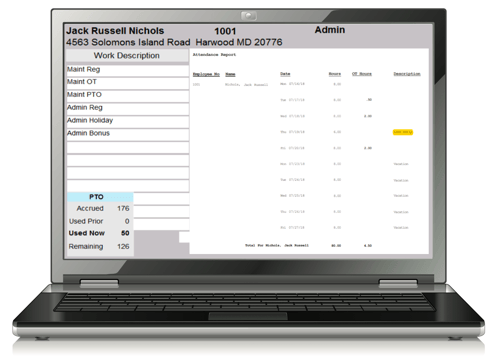You rely on your people to get the job done and to keep your landscaping business profitable as a result. But in order to do that, they need to actually show up!![]()
Unfortunately, employee absenteeism is a real problem and the landscape industry is certainly not immune to it. How many times have you had no-shows that have left you in a total bind for work that day?
But it’s not just failing to show up, it’s also punctuality. It might not sound like a big deal that an employee occasionally shows up 5 or 10 minutes late. After all, you understand that traffic sucks. But what if it’s happening a lot more often than you realize? That lost time is costing you real dollars and could actually be a potentially detrimental problem. Particularly if it starts to impact other employees and make them late getting out of the yard each morning.
Clearly, your employees’ time (and how it is spent) is a big deal. It has a direct tie to your profitability and therefore should be taken seriously. That’s why we’re exploring some helpful timekeeping tips that will help you do a better job with this vital task.
What Should I Track?
First and foremost, you need to be certain that you are tracking the right data regarding your employees. It may feel like “keeping tabs,” but it’s really important. After all, you have the most to lose if your employee isn’t performing as they should.
With that in mind, plan to track the following data regarding employees’ attendance:
- Tardies
- Leaving early
- Absences
- Communication about absences (no call, no show vs. call, and no show)
Why is this important? Well, for one, tardy and absent employees can directly cost you money. And if you want to address these problems with an employee but you’re not actually tracking what they’re doing, you don’t have much ground to stand on.
However, if you have data, you can show employees exactly what you mean. On top of that, you can also catch a problem early and aim to nip it in the bud. If an employee is consistently late, it’s possible that you may not realize just how bad it is unless you’re tracking how often it happens. Even being 10 minutes late every day can really add up. One way that you can enforce punctuality is by creating attendance policies, which we’ll discuss more, next.
Create Official Policy Surrounding Time Expectations
 Creating official policy regarding time expectations will help your employees understand what’s acceptable. One way to do this is to also create a point system. For instance, you could get points taken off for a no-call, no-show situation. You could also dock points for no-shows with a call, but take fewer off. Tardies or leaving early could also be point losses.
Creating official policy regarding time expectations will help your employees understand what’s acceptable. One way to do this is to also create a point system. For instance, you could get points taken off for a no-call, no-show situation. You could also dock points for no-shows with a call, but take fewer off. Tardies or leaving early could also be point losses.
If you decide to do something like this, then you might also want to consider what disciplinary measures you would enforce for lost points. If an employee loses all of his or her points, that might mean automatic termination—no matter how much you want to keep that employee. That reinforces just how important attendance is and that being punctual is critical.
An effort like this is also good for morale. Think about your employees who show up on time day in and day out. They could very easily become resentful of your employees who are always strolling in 5, 10, or even 15 minutes late—particularly if no action is ever taken against them. They may start to feel like their punctuality doesn’t matter. Even worse, maybe they’ll start to come in late, too.
But if you stick to your office policy, you can prevent a small problem from snowballing and you can protect employee morale. You can demonstrate that punctuality and attendance are important for everyone and that it will be recorded.
Provide Regular Feedback and Recognition
Once you’ve established policy, you still have to check in with your employees and let them know how they’re doing in meeting your expectations. Employees aren’t really going to know whether you feel they’re doing well (or could use some improvement) unless you provide that feedback. Communication is incredibly important. First, set the expectations. Then, tell employees how they’re doing in terms of meeting those expectations.
Your employees not only need to know how they’re doing but they also need to be recognized for success. If you have employees who are consistently meeting or exceeding your expectations, you need to show them some recognition.
Why?
Well, for one, it reinforces a good habit. A punctual and dependable employee should be celebrated publicly. That encourages the employee to keep up the behavior. But it also lets the team know that punctuality and dependability are characteristics that are important to you, and to the company as a whole. It will inspire your employees to follow suit.
You could even take that effort as far as creating an exclusive privilege or an event for only those employees who have met a certain level of adherence to your time policy. It’s important to reward your dedicated people. But, don’t forget to leave some room for imperfection, as well. The last thing that you want is for your policy to become incredibly discouraging for employees who are only occasionally late and for good reason. It must be a balance.
Systems and Tools for Time Tracking Success
Now that you know everything you should be tracking, and you have some official policy in place regarding time expectations, you may be feeling a bit overwhelmed about how you’re going to do it all and also be effective. There is a lot of data to track and if you’re a big company, then naturally you have a lot of employees to keep track of.
 In order to be effective, you’ve likely realized that you can’t rely on outdated time tracking methods. Manually tracking employee time on paper time sheets is incredibly cumbersome. If you’re already doing it, then you know it’s a flawed system.
In order to be effective, you’ve likely realized that you can’t rely on outdated time tracking methods. Manually tracking employee time on paper time sheets is incredibly cumbersome. If you’re already doing it, then you know it’s a flawed system.
For instance, here’s a common scenario: your operations manager knows that a foreman hasn’t come in for the day. He’s supposed to be recording that information on the paper timesheet he has but he’s also quite busy picking up the slack since that employee didn’t show up. Do you really think he’s going to sit down, fill out a paper timesheet, and then bring it over to HR so that it can get recorded in a master Excel spreadsheet?
By the time he has a few free minutes to do that, he may have forgotten. Maybe the foreman showed up late and it just got overlooked. That could be a scenario that keeps happening but HR is never made aware. Or maybe by the time your operations manager does bring an updated timesheet over to HR, it’s been a while. It would have been much better to have that data in real time.
Punching in on time clocks can also problematic. Have you heard of time clock fraud? It’s a real problem in the workplace and it might be happening in your landscape business without you even realizing it.
One example of time clock fraud is “buddy punching,” which is when an employee clocks in for his (or her) friend who isn’t actually there yet. Of course, you’d like to assume that your employees would never steal from you (and that’s exactly what they’re doing in this case—they’re stealing time), but workplace dishonesty is rampant these days. Some landscaping companies have integrated finger scanners to prevent buddy punching from taking place. It eliminates the possibility of one person clocking in others.
However, even with fingerprint scanning, you still need a good way to keep track of all that data. The solution is a digital timekeeping system which is integrated with a comprehensive software solution. This will ensure that your data is connected to everything from payroll to production data and of course, employee record keeping. And it can all be done automatically. That means you can also feel confident that the data is ending up where it’s supposed to be. Employee information will go immediately to HR in real time, as soon as it’s entered—and it’s so much easier to do with a digital system than it would have been writing it all down.
Using Landscape Business Software for Timekeeping
No matter how you’re currently tracking time, if you feel like there’s got to be a better way, then landscape business software may be the solution you’re looking for. Landscape business software which integrates with a digital timekeeping component will completely streamline the process for you. By making it easy to input employee time data and also allowing it to automatically end up where it needs to go, you’ve vastly simplified an incredibly important task.
With software, you’ll also be able to run meaningful reports for your employees that show them how their attendance has been. This will help you to reinforce official policy and also provide recognition when warranted. By holding your employees accountable, you are also protecting your profitability by discouraging lost or stolen time. In an industry where time is money, that’s huge.
If you’re ready to see how landscape business software integrated with digital timekeeping can improve your business, or you have questions that we can help with, then let’s explore and see what Asset can do for you.



